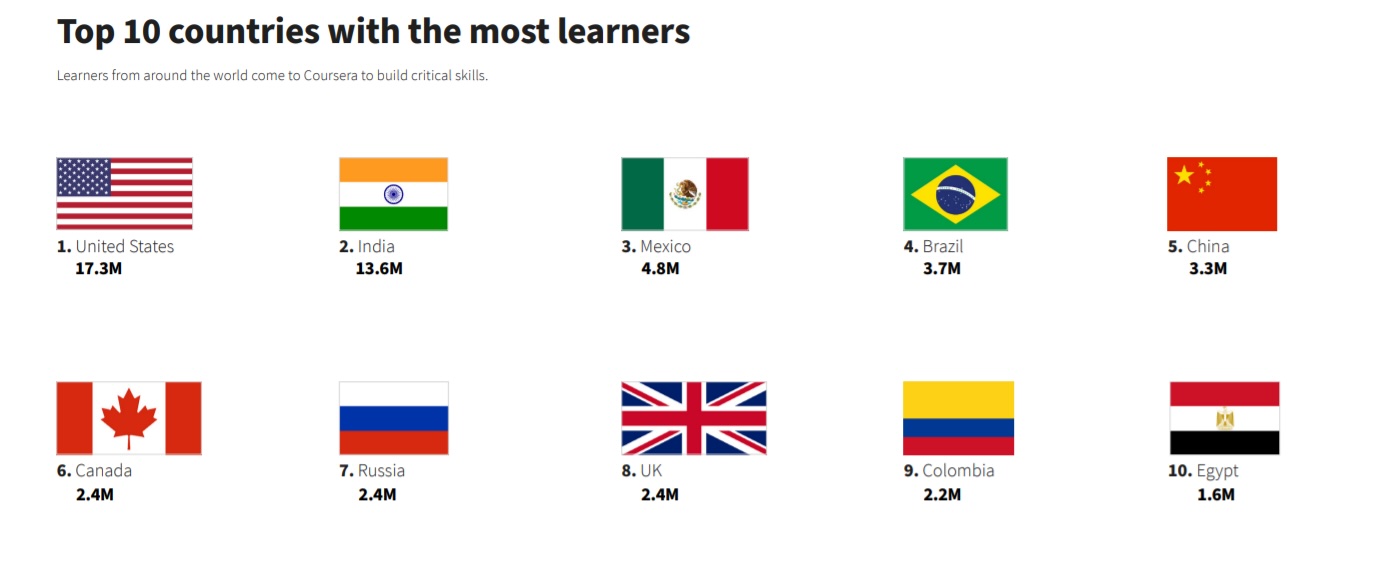Is AI Dubbing Worth the Cost for eLearning Localization?
Updated: February 4, 2025
The eLearning industry is sitting on a massive opportunity for growth by tapping into non-English speaking markets around the world. Over 75% of the global population speaks languages other than English. By using AI dubbing for elearning localization you can expand your audience reach by 15% to 30%.
Let’s explore the untapped global opportunities awaiting the eLearning market.
Discover 3Play’s Revolutionary AI Dubbing Solution
Is there global demand for eLearning?
While the US remains the leading market for online learning, countries like India, Mexico, Brazil, and China collectively represent more than 25 million learners, according to a study by Coursera. Emerging economies in South America (Paraguay and Guyana) and South Asia (Philippines and Indonesia) are driving the fastest growth in new online learners, as revealed by the same study. Europe’s online learning market is also booming, with Germany leading the pack at an 8.5% annual growth rate. eLearning continues to be the fastest-growing segment in the education industry
 Image credit: Coursera Impact Report
Image credit: Coursera Impact ReportSo, how do you capitalize on the global demand?
To maximize global impact, prioritize languages with high demand and low competition among your target audience. This approach allows you to evaluate the size of the potential market and complexity of localization.
MrBeast’s strategy, while a different flavor of online learning content, offers valuable lessons for eLearning organizations looking to expand globally.
- Understand your target audience: This will help you create culturally relevant and effective eLearning content.
- Invest in quality dubbing: Find a vendor who ensures accurate translations, cultural adoptions, and high-quality audio. Utilizing a human-in-the-loop AI dubbing solution will ensure your content remains authentic and engaging, while maximizing your budget.
- Measure and optimize: Track key metrics like video views, engagement rates, and conversions to measure the impact of your localization efforts.
Why is AI dubbing the best way to localize eLearning content?
With AI dubbing, organizations can deliver an immersive learning experience at scale. AI dubbing offers:
- Cost-effective localization: AI dubbing eliminates the expensive production costs of traditional dubbing. It offers a cost-effective solution, typically 15-50% less expensive than traditional dubbing.
- Accelerated expansion: With AI dubbing, you can quickly localize content into numerous languages without the need to re-record content.
- Consistent quality: AI dubbing offers a variety of options for voices (like synthetic native voices, matching, and cloning) and quality control of the translations.
- Subtitling preserves the original audio and can aid in language learning, but may not be suitable for all learners, particularly those with reading difficulties or limited language skills.
- Dubbing provides a more immersive experience, enhancing the emotional impact and comprehension of the content. However, it’s important to use a vendor who can preserve the cultural nuances.
The global demand for online learning underscores the need for efficient and cost-effective localization strategies. AI dubbing is the perfect solution for eLearning organizations that care about enhancing comprehension of their content for a global audience.
How to start localizing eLearning content with AI dubbing
Most organizations will start with a pilot program to determine if localizing is worthwhile. A pilot program is a small-scale experiment designed to test the impact of a new idea. For eLearning organizations this may involve:
- Selecting a target language: Start with the one or two languages with the highest potential demand.
- Choose a course or set of videos: Depending on your target audience, you may choose a topic that is trending in that region. Or you can prioritize your most popular courses.
- Find a localization partner: Choose an AI dubbing partner that integrates with your existing workflow. Evaluate your solutions based on translation accuracy, voice quality, support, and cultural nuances.
- Launch your pilot program and measure progress: Track key metrics like learner engagement, completion rates, satisfaction levels, and subscribers.
- Analyze results: Assess the success based on the data you collected.
If your pilot program was successful, you can prioritize localizing other high-demand content. As you expand into additional languages, consider conducting similar pilot programs to mitigate investment risks.






